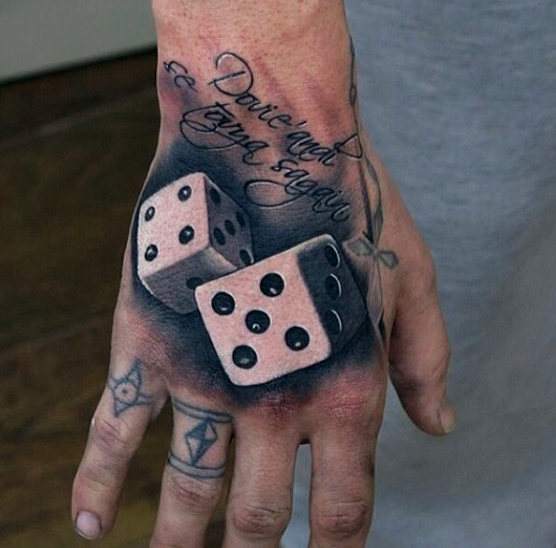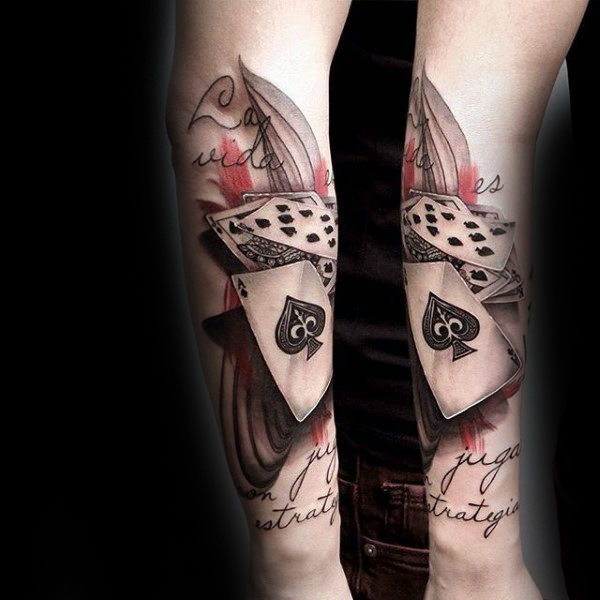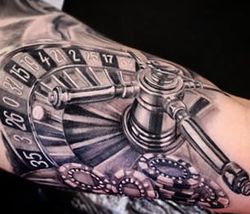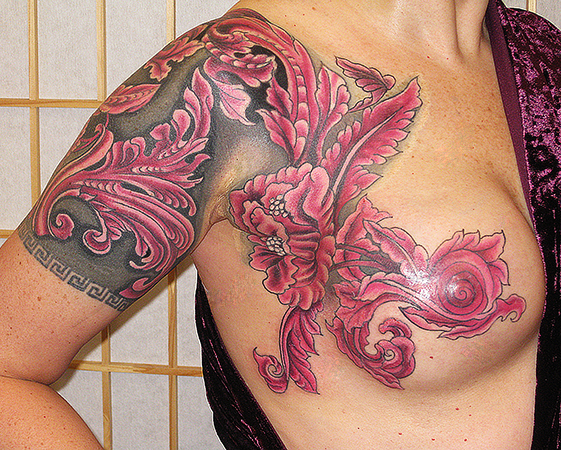The Meaning of Gambling Related Tattoos
The meaning or interpretation of symbols and icons changes over time. Depending on cultures and beliefs, symbols can be significant in completely separate ways to different people.
Body art fans will be aware that a tattoo can offend one culture but be supported by another. It is something to consider before getting inked.
The meaning of some tattoos can change over time from positive to negative or vice versa. As with many things, it is literally how you react or perceive something that denotes a meaning to you. Historically tattoos were a popular custom to show strength of character. The pain endured from a tattoo was seen to enhance the individual’s spiritual wellbeing. Whereas now they are seen as a form of self-expression.
Dice, card and roulette tattoos, which come under the gambling umbrella in style, all have different connotations. It might not just be that the owner likes to play slots online.
We look at the connotations of gambling tattoos in more detail below:
Dice
Dice tattoos can have varied meaning. The most obvious is the ‘roll the dice’ attitude to life. Typically, a free spirit, they do not pre plan and lets life take them on an unknown route.
The number rolled on the dice is also significant and can denote a winning attitude to life or luck.
Dice are often included in other tattoo designs rather than drawn alone and therefore the surrounding context can influence their connotations.
The image below and text suggests a daredevil attitude to life and someone living on the edge.
Playing Cards
Just as with dice, the face of the card will have different connotations. These could be a royal flush, an ace, a king or any combination.
The most popular hand used in tattoo design is the Royal Flush, made up of the ace, King, Queen, Jack, and 10 of all one suit (hearts, diamonds, spades or clubs). This is the ultimate winning hand in poker and symbolises power.
Certain singular cards have meaning as well such as the joker which can signify a playful character, and some believe this is a good luck charm.
Connotations can differ wildly over time, such as the Ace of Spades. In the 17th century it was considered good fortune, but come the Vietnam War where soldiers wore the card on their helmets, it came to symbolise death.
Roulette Wheel
Again, the roulette wheel is a symbol in itself and also the numbers that are shown on the tattoo design.
The wheel is a symbol of risk, but for large payouts. In this way it can show the euphoria gamblers get from risking it all to win!











